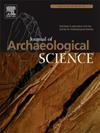Assessing quantitative methods in archaeology via simulated datasets: The Archaeoriddle challenge. Concept, project and motivations
IF 2.6
1区 地球科学
Q1 ANTHROPOLOGY
引用次数: 0
Abstract
Compared to what is found in many other scientific disciplines, archaeological data are typically scarce, biased and fragmented. This, coupled with the fact that archaeologists can rarely test their hypotheses using experimental design, makes archaeological inference and our ability to assess the robustness of quantitative methods used to make such inferences challenging.
Archaeoriddle is a project that was born as an attempt to compare archaeological methods in an artificial scenario where the behaviour to be reconstructed was known. In this project we organised an experiment where a virtual archaeological record generated from a simulated interaction between hunter–gatherers and early farmers in a fictional landscape was shared with interested participants. Three archaeological questions were posed and the participants were challenged to answer them with the data that the developer team made available. The model and the generative processes behind the virtual record were known to the developers of the virtual world (Rabbithole) but not to the participants. Additionally, players were allowed to sample only a subset of the data from Rabbithole, mimicking real-life archaeological research and sampling efforts.
The long-term aim of the project is to assess how different methods performed under a controlled environment since, in this case, we knew the correct answers to the questions posed. This experience provided us with some insights into (1) how efficient various archaeological methods are in answering complex questions; (2) the degree of interest from archaeologists in improving their analytical techniques; and (3) the potential of archaeological method when free from external constraints (e.g. budget, fieldwork, etc.).
通过模拟数据集评估考古学中的定量方法:考古谜题的挑战。概念、项目和动机
与许多其他科学学科的发现相比,考古数据通常是稀缺的、有偏见的和碎片化的。这一点,再加上考古学家很少能用实验设计来检验他们的假设,使得考古推断和我们评估用于做出这种推断的定量方法的稳健性的能力具有挑战性。Archaeoriddle是一个项目,它的诞生是为了在一个已知重建行为的人工场景中比较考古方法。在这个项目中,我们组织了一个实验,在一个虚构的景观中,模拟狩猎采集者和早期农民之间的互动产生了一个虚拟的考古记录,并与感兴趣的参与者分享。研究人员提出了三个考古问题,要求参与者使用开发团队提供的数据来回答这些问题。虚拟世界(Rabbithole)的开发者知道虚拟记录背后的模型和生成过程,但参与者不知道。此外,玩家只被允许从《Rabbithole》中取样数据的子集,模拟现实生活中的考古研究和取样工作。该项目的长期目标是评估在受控环境下不同方法的执行情况,因为在这种情况下,我们知道所提出问题的正确答案。这一经历使我们对以下问题有了一些认识:(1)各种考古方法在回答复杂问题方面是多么有效;(2)考古学家对提高分析技术的兴趣程度;(3)不受外部约束(如预算、实地考察等)时考古方法的潜力。
本文章由计算机程序翻译,如有差异,请以英文原文为准。
求助全文
约1分钟内获得全文
求助全文
来源期刊

Journal of Archaeological Science
地学-地球科学综合
CiteScore
6.10
自引率
7.10%
发文量
112
审稿时长
49 days
期刊介绍:
The Journal of Archaeological Science is aimed at archaeologists and scientists with particular interests in advancing the development and application of scientific techniques and methodologies to all areas of archaeology. This established monthly journal publishes focus articles, original research papers and major review articles, of wide archaeological significance. The journal provides an international forum for archaeologists and scientists from widely different scientific backgrounds who share a common interest in developing and applying scientific methods to inform major debates through improving the quality and reliability of scientific information derived from archaeological research.
 求助内容:
求助内容: 应助结果提醒方式:
应助结果提醒方式:


